I-Chun Chen
Retraining-Free Merging of Sparse Mixture-of-Experts via Hierarchical Clustering
Oct 11, 2024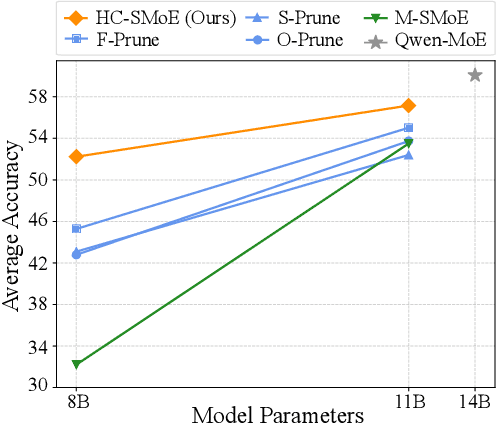

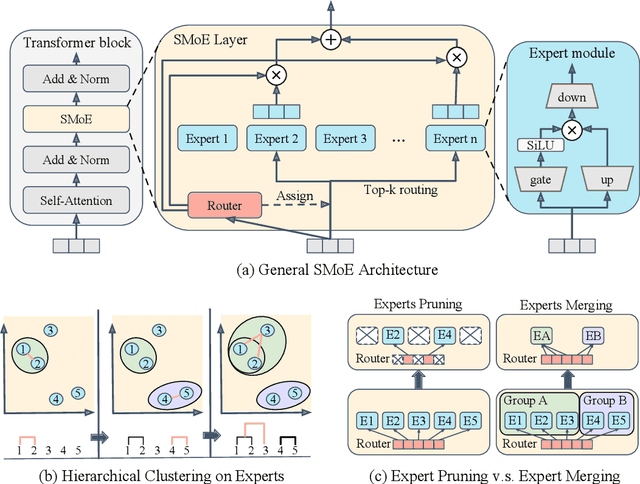

Abstract:Sparse Mixture-of-Experts (SMoE) models represent a significant breakthrough in large language model development. These models enable performance improvements without a proportional increase in inference costs. By selectively activating a small set of parameters during task execution, SMoEs enhance model capacity. However, their deployment remains challenging due to the substantial memory footprint required to accommodate the growing number of experts. This constraint renders them less feasible in environments with limited hardware resources. To address this challenge, we propose Hierarchical Clustering for Sparsely activated Mixture of Experts (HC-SMoE), a task-agnostic expert merging framework that reduces SMoE model parameters without retraining. Unlike previous methods, HC-SMoE employs hierarchical clustering based on expert outputs. This approach ensures that the merging process remains unaffected by routing decisions. The output-based clustering strategy captures functional similarities between experts, offering an adaptable solution for models with numerous experts. We validate our approach through extensive experiments on eight zero-shot language tasks and demonstrate its effectiveness in large-scale SMoE models such as Qwen and Mixtral. Our comprehensive results demonstrate that HC-SMoE consistently achieves strong performance, which highlights its potential for real-world deployment.
MidiBERT-Piano: Large-scale Pre-training for Symbolic Music Understanding
Jul 12, 2021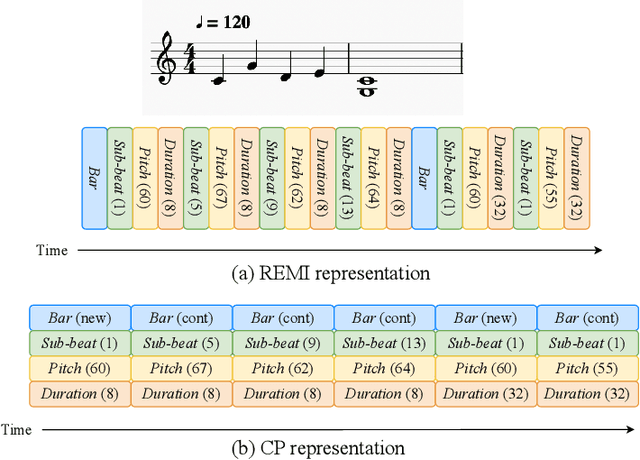
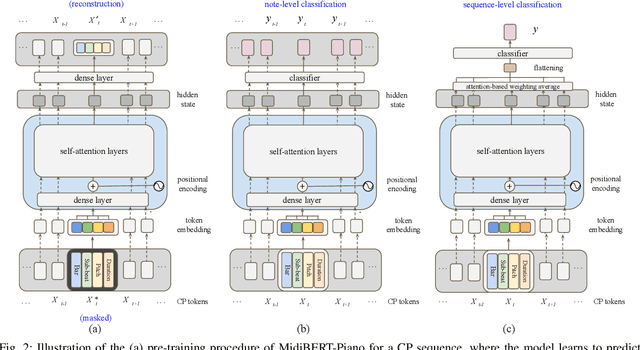
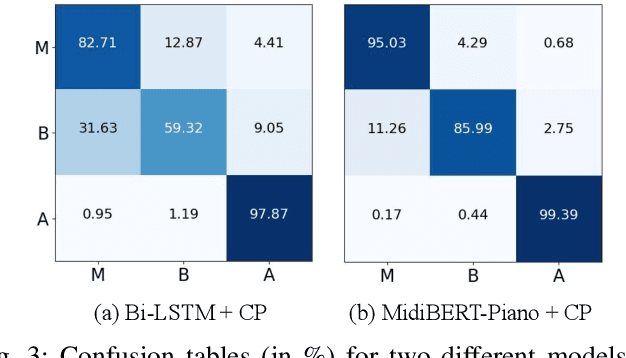

Abstract:This paper presents an attempt to employ the mask language modeling approach of BERT to pre-train a 12-layer Transformer model over 4,166 pieces of polyphonic piano MIDI files for tackling a number of symbolic-domain discriminative music understanding tasks. These include two note-level classification tasks, i.e., melody extraction and velocity prediction, as well as two sequence-level classification tasks, i.e., composer classification and emotion classification. We find that, given a pre-trained Transformer, our models outperform recurrent neural network based baselines with less than 10 epochs of fine-tuning. Ablation studies show that the pre-training remains effective even if none of the MIDI data of the downstream tasks are seen at the pre-training stage, and that freezing the self-attention layers of the Transformer at the fine-tuning stage slightly degrades performance. All the five datasets employed in this work are publicly available, as well as checkpoints of our pre-trained and fine-tuned models. As such, our research can be taken as a benchmark for symbolic-domain music understanding.
 Add to Chrome
Add to Chrome Add to Firefox
Add to Firefox Add to Edge
Add to Edge